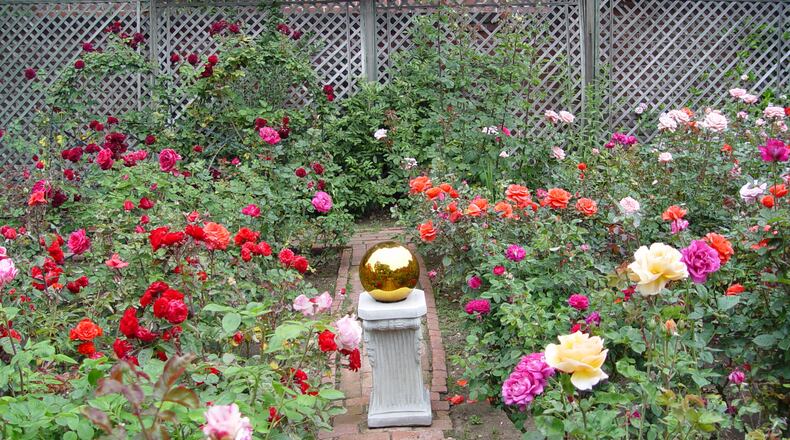All over America, yards have older hybrid tea roses languishing for lack of care. These are often specimens planted any time from a decade to a century ago. They’re discovered when you buy or rent a home, often miraculously still alive but not very productive. If you’re handy with clippers, there’s an easy way to make these plants more productive with just a little regular pruning. It will rejuvenate them into blooming continuously all the way to frost. Here are the basics:
SIZE
Tea roses are fast-growing plants that produce basal canes just above the graft and new flowering wood on the growth tips. Each time flowering wood branches, the new shoot will be smaller in diameter than its predecessor. The smaller diameter stems produce only small roses that dangle due to their weight. The rule of thumb for pruning your flowering wood is to keep the stems to about the diameter of a pencil, and no smaller for strong stem, upright cut flowers.
SHAPE
Pruning flowering wood also is a process of shaping your rose. The ideal is an open top vase shape that allows light and air to reach inside the plant to discourage disease. For this reason every cut you make should support this by facing outward whenever possible. Over time this results in a larger, healthier plant overall.
FLOWERS
Each tea rose flower may be followed by a fruit or hip if it’s pollinated. Flower growers do not let these develop by cutting their flowers often to bring indoors. When they cut, energy is sent into new buds to help them develop more quickly. That’s why rose people are always out there cutting each spent flower promptly, and when they cut it they use a special method.
Trace the spent flower down its stem to the parent branch. Count three nodes (small dots or bumps, not thorns) up from the joint and make the cut there. Ideally the bud should face outward or in a desirable direction. If it’s bound for conflict, go to the second or fourth bud to get properly oriented new stem. This three-node method is universal so you can’t make a mistake during the growing season.
Most of these tea roses were grafted, which means the scion variety such as ‘Peace” is grafted onto another rose called the rootstock. This rootstock was often an old vigorous red rambler. When you see red roses or small white ones that resemble apple blossoms amidst more spectacular flowers on the same plant, know that is a rootstock sucker. They literally suck up all the nutrition and water, denying your varietal scion wood. Trim them off. A healthy rose produces new canes just above this graft union. Allow these to flourish into replacements for old dying ones.
Make a point of removing any and all dead wood, twigs or “canes” throughout the whole plant. Remove them by cutting back to living wood so the wound can heal and produce new replacement growth. If in doubt about living or dead, nick the bark before you cut. If it’s green underneath, it’s alive.
Always keep your rose pruners razor sharp. The cleaner your cut, the faster it heals and the less dieback results. If you must cut a big green cane during the heat of summer, dab some craft paint on the open wound for a bandage to prevent dieback. Use long handled loppers to cut out the big old canes and a short pruning saw is perfect for rotting stumps of dead sections.
Even though roses slow down in the late summer heat, out west they flourish in the fall too, blooming along the Pacific Coast beach towns from Canada to Mexico. To get great performance out of existing roses in your yard, let coffee or cocktail remind you to go out and snip each day. The roses will flourish under this care turning old neglected plants in the great color spot of your garden without spending a penny.
———
Maureen Gilmer is an author, horticulturist and landscape designer. Learn more at www.MoPlants.com
About the Author
Keep Reading
The Latest
Featured

